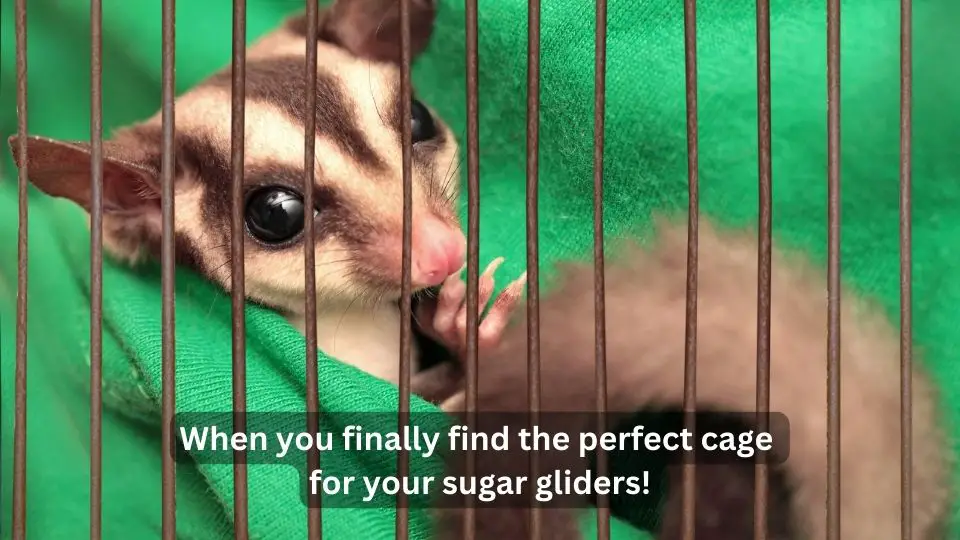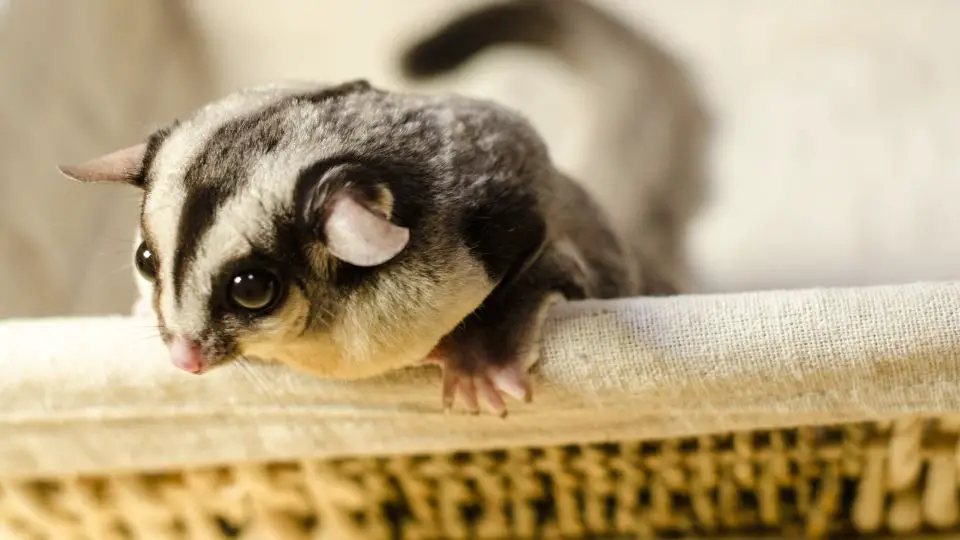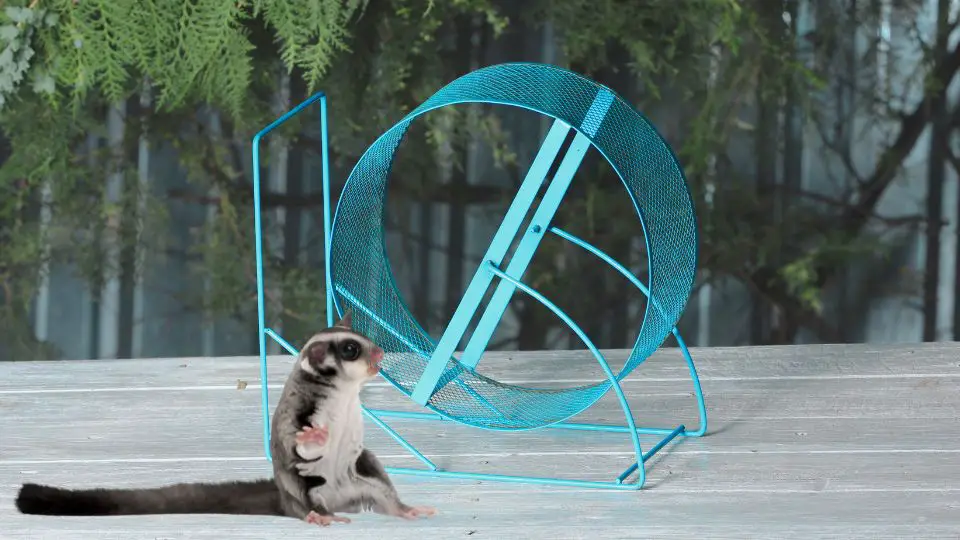A rejected sugar glider joey is one that has been rejected by its mother and is not being cared for. If you have found a rejected sugar glider joey, there are some things you need to do in order to care for it.
The first thing you should make sure is that the joey is warm. Sugar gliders are tropical animals and need to be kept warm. You can do this by putting the joey in a covered box with a hot water bottle or heating lamp set on low.
The next thing you need to do is to feed the joey. You can do this by using a syringe to feed the joey formula designed for sugar gliders. Make sure you do not overfeed the joey as this can make it sick.
In this article, we talk about everything you need to know about taking care of a rejected sugar glider joey. We cover how to keep the joey warm, how to feed it, and when to leave the joey alone with the mother again.
How do you take care of a rejected sugar glider joey
From time to time, it happens that a female sugar glider will reject one of her joeys. If you have found a rejected sugar glider joey, don’t despair! There are some things you need to do in order to care for it, and with a little bit of effort, you can successfully raise the joey yourself.
After pregnancy, you should observe from distance how the mother takes care the little babies. If, for some reason, the mother is not taking care of her joey, then you will need to step in and take over the caretaking duties.
Caring for a rejected sugar glider joey is a lot of work, but it is definitely worth it! With a little bit of patience and effort, you can successfully raise a healthy and happy joey.
Feeding
The most important thing is to make sure that the joey is eating. You can do this by using a syringe to feed the joey formula designed for sugar gliders. Make sure you do not overfeed the joey as this can make it sick. Below, we provide a table about the amount of formula you should give per feed and the frequency of the feedings.
Stimulating the Joey
After feeding the joey, it is important that you stimulate it to go to the bathroom. This can be done by using a cotton swab or soft cloth to gently massage the joey’s stomach in a circular motion.
You can also use a Q-tip to massage the joey’s stomach in order to stimulate defecation. Do this for a minute or two after each feeding.
Cold
A rejected joey can become too cold very easily. The easiest way to warm the baby is by picking it up in a soft cloth and placing it against your chest until it is warm. You can also warm the piece of cloth in the dryer for a few minutes before placing the joey inside.
Another way to keep the joey warm is by using a heating lamp on low. Make sure that the joey has enough room to move away from the heat source if it starts to feel too warm. We do not recommend this, because it can be very easy to accidentally hurt by causing dehydration if the heat is too strong.
It is important to know that joeys don’t know how to regulate their own body temperature, so it is up to you to make sure that the joey doesn’t get too cold or too hot, so you need to pay attention to the little baby all the time.
Dehydration
Dehydration is a serious concern for sugar glider joeys. Make sure that the joey is getting enough fluids by offering it water or sugar water (equal parts water and sugar) from a syringe. You can also give the joey Pedialyte to help prevent dehydration.
If the joey is dehydrated, you will need to take it to the vet as soon as possible. Dehydration can be fatal if not treated promptly.
Sugar glider joeys are very delicate and need a lot of care. If you are not able to provide the necessary care, it is best to take the joey to a local exotic vet or sugar glider rescue.
How to feed the joey
The most important thing is to make sure that the joey is eating. You can do this by using a syringe to feed the joey formula designed for sugar gliders.
Be sure do not refrigerate the formula as this can make it go bad. Also, be sure to warm up the formula before feeding it to the joey, as sugar gliders are tropical animals and need to be kept warm.
Here are some tips on how to feed the joey:
- Warm the formula up to body temperature. You can do this by placing the bottle of formula in a cup of hot water for a few minutes.
- Use a soft cloth to support the joey’s head while you are feeding it.
- Insert the syringe into the side of the joey’s mouth and slowly squeeze the formula into its mouth.
- Be sure to not get milk in the nose of the joey, as this can cause respiratory problems.
- Stop feeding the joey if it starts to cough or choke.
- Do not overfeed the joey as this can make it sick.
How to make milk
There are many recipes for milk replacers for sugar gliders, but we recommend using this one:
- 5g Biolac M100 (marsupial milk replacer). You can also use Esbilac Puppy Milk Replacer Powder. Don’t use kitten formula because it is too high in lactose;
- 10g Unflavored Pedialyte (or bottled water/filtered water);
- 0.3 ml – 0.6 ml of simethicone (baby gas drop relief);
- 1:2 ratio of powder:liquids (1 part powder for 2 parts liquid).
Feeding Schedule
| Age | Feeding Amount | Feeding Frequency |
| 0 – 2 weeks OOP* | 0.3ml – 0.5ml | Every 1 – 2 hours |
| 2 – 4 weeks OOP | 0.5ml – 1ml | Every 2 – 3 hours |
| 4 – 6 weeks OOP | 1ml – 2ml | Every 3 – 4 hours |
| 6 – 8 weeks OOP | Joey should eat alone | Joey should eat alone |
*OOP – Out of pouch
When should I leave the joey alone with his mother again?
After the joey is warm again, well fed, and it doesn’t suffer from dehydration, you can try to let him alone with his mother again. If the mother doesn’t accept him, you will have to continue taking care of the joey.
Also, when you discover that the joey is rejected, make sure that it doesn’t have bite marks or scratches, as this could mean that the mother is aggressive and might hurt the joey if you put him back with her.
Signs that the mother accepts the joey back are:
- The mother starts to feed the joey;
- The mother starts to clean the joey;
- The mother allows the joey to hang out onto her back.
Signs that the joey was rejected
There are several signs that can indicate that the joey was rejected:
The mother sugar glider is not seen taking care of the joey
It can happen that the mother sugar glider doesn’t take care of the joey anymore and starts to avoid it. This can be because the mother is not producing enough milk or the baby is too weak to survive, so the mother gives up.
The joey has bite marks
If you see that the joey has bite marks or scratches, it means that the mother sugar glider has rejected it, and it is in danger.
The joey is found on the ground away from the mother’s nest
If you find the joey on the ground away from the mother’s nest, this is a sign that the joey was most likely rejected. Sugar gliders are very protective of their young and will not usually leave them out in the open like this.
Joey is cold
As we mentioned, joeys do not know how to regulate their body temperature, so if the baby is cold when you touch it, it’s a sign that it may have been rejected. The little baby can also cry and make a distressed noise when it is cold.
Why do sugar gliders reject their babies?
There are several reasons why the sugar glider mother can reject a joey. The most common reasons are:
The mother is not producing enough milk
Usually, female glider give birth to 2 joeys, and sometimes they can’t produce enough milk for both, so one of the joeys gets rejected. Or she gave birth to more than 2 joeys, and she can’t care for all of them, so she has to pick the strongest ones.
The joey is too weak
The joey can be born weak and can’t latch onto the mother’s teat to feed or hold on to her fur. If this happens, the mother doesn’t have what to do, so she rejects the baby.
The mother is ill
The mother can be ill, and this is one of the reasons why she rejects the joey. When the mother is not feeling well, she doesn’t have the strength or the milk to care for her joey.
The mother is stressed
The mother can be stressed because of the lack of food, water, or because she is not in her natural habitat. When a sugar glider is stressed, she can’t produce milk and will most likely reject the joey.
Conclusion
If you find yourself in the position of having to take care of a rejected sugar glider joey, there are some things you need to know. First, make sure the joey is warm and well-fed. You will also need to give the joey stimulation for gas relief.
Be sure to follow a 1:2 ratio of powder to liquids when feeding the joey. If possible, try to reintroduce the joey to its mother. If the mother does not accept the joey, you will need to continue taking care of it.
If you have any concerns, be sure to consult with a veterinarian familiar with sugar gliders.







